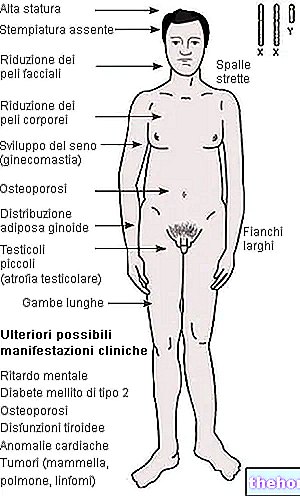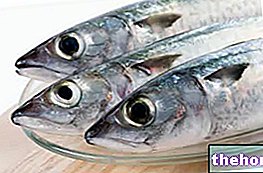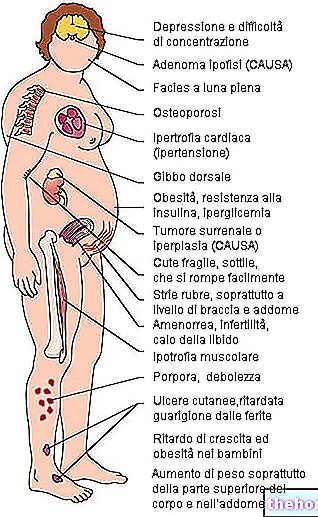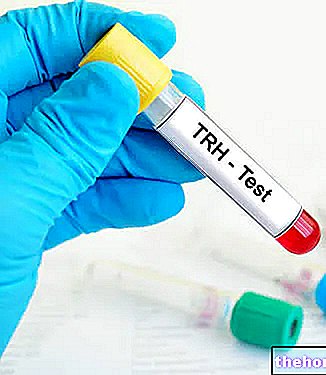Generality
Thyroglobulin (Tg) is the main constituent of the colloid, contained within the thyroid follicles. More specifically, it is an iodinated glycoprotein (containing iodine) produced by thyroid cells (thyrocytes).

If necessary, thyroglobulin is reabsorbed by the colloid, then it is broken down to give rise to triiodothyronine (T3) and thyroxine (T4).
The production of these thyroid hormones and their release into the bloodstream are stimulated by the pituitary hormone TSH (thyroid stimulating hormone).
The determination of thyroglobulin in the blood is mainly used as a tumor marker, to evaluate the efficacy of thyroid cancer therapy and to monitor relapses.
What's this
Thyroglobulin (Tg) is the precursor glycoprotein molecule of the thyroid hormones T3 and T4.
The thyroid gland is organized in very small and tightly packed follicles, so much so that in adulthood there are about 3 million. Outside these circular structures we find a cuboidal monostratified follicular epithelium, while in the internal portion there is a gelatinous and yellowish liquid, the colloid, consisting mainly of thyroglobulin.
Thyroglobulin is synthesized by the epithelial cells (thyrocytes) of the follicle, in turn surrounded by a dense capillary network, which makes the thyroid one of the most vascularized structures in the body. It is through the bloodstream that iodine reaches the follicle; level is in fact essential for the synthesis of thyroid hormones, which starts from the ionidation of thyroglobulin by the enzyme iodinase (also called TPO or iodide peroxidase).
Inside the thyroglobulin molecule (which contains 70 tyrosines), thanks to the intervention of iodinase, tyrosine residues with one or two iodine atoms can be formed, respectively called MIT or 3-monoiodotyrosine and DIT or 3,5- diiodotyrosine.

Once produced, T3 and T4 are not free, but remain an integral part of the more complex thyroglobulin peptide.
TSH or thyrotropic hormone, of pituitary origin, is the main control factor, both for the synthesis of thyroglobulin and for the release of thyroid hormones into the circulation. This last process occurs through a complex cellular mechanism; the epithelial thyrocytes, in fact, phagocyte thyroglobulin, which inside the vesicles (phagosomes) undergoes the degradative action of lysosomal enzymes: the link between thyroglobulin and thyroid hormones is split and the same degraded glycoprotein. Thus, on the one hand the thyroid hormones are released into the bloodstream, while on the other hand what remains of the thyroglobulin is recycled inside the same cell, then used for the synthesis of new proteins and thyroid hormones.
Because it is measured
Determination of thyroglobulin is useful for monitoring the treatment of thyroid cancer. Often, this test is ordered at regular intervals after surgery to detect a recurrence or spread of the neoplastic process.
Thyroglobulin is not synthesized by all thyroid tumors, but in the most common forms (such as papillary and follicular adenocarcinoma) an increase in its blood concentrations is frequently observed.

In the presence of certain thyroid disorders, thyroglobulin testing may be ordered along with other tests involving the gland.









.jpg)


















